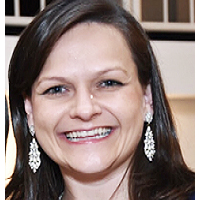Factors affecting physical activity of recuperating alcoholics in Asumbi-Homabay rehabiliation center, Kenya
Published on: 24th October, 2018
OCLC Number/Unique Identifier: 7923860537
Background: Alcoholism is a widespread problem in Kenya and is associated with severe impacts on health and quality of life of the individual. Physical activity is an affordable and sustainable adjunct treatment option for recuperating alcoholics; however its’ rarely used in rehabilitation of alcoholics in Kenya.
Objective: This qualitative study sought to elicit facilitators and barriers that influence the practice of physical activity amongst recuperating alcoholics under rehabilitation.
Methods: A focus group guide was utilized to gather views and perceptions of 15 alcoholics and 5 health professionals through focus group discussions. Constant comparative approach was used to analyze verbatim transcripts obtained from in-depth interviews. This analysis entailed three stages including open, axial and selective coding.
Results: Recuperating alcoholics’ recognized various forms of physical activity to promote mental and physical health during their rehabilitation. Health professionals and significant others considerably supported the recuperating alcoholics to practice physical activity however physical activity facilities and facilitation was lacking in Asumbi rehabilitation center.
Conclusions: The rehabilitation centres should have physical activity experts and facilities that can offer individualized physical activity services and support needed by the recuperating alcoholics.
Clinical significance of Urinary Amylase in Acute Pancreatitis
Published on: 27th June, 2017
OCLC Number/Unique Identifier: 7317596310
Acute pancreatitis forms a major bulk of our inpatient admission due to gall stone disease. Diagnosis of acute pancreatitis remains a challenge even now. Serum amylase remains the most commonly used biochemical marker for its diagnosis but its sensitivity can be reduced by late presentation, hyper-triglyceridemia and chronic alcoholism. We conducted a study to determine the levels of serum and urinary amylase in patients with acute pancreatitis and compared their sensitivity and correlation with CT findings vis-à-vis the severity of the disease. The study was taken as a post graduate research model in the Post graduate Department of General and Minimal Access Surgery, Govt. Medical College Srinagar, J&K, India 2014-2016 and submitted for the award of masters in General Surgery. A total number of 150 patients were enrolled in the studies which were admitted in our unit as acute pancreatitis. 73 (48.7%) belonged to the age group of 30-44 years, 15(10%) patients aged >60 years with 86 (57.3%) males and 64 (42.7%) females. We had 81 (54%) patients with biliary tract diseases, followed by 21 (14%) patients with worm induced, 20 (13.3%) had hyperlipidaemia and only 4 (2.7%) patients had post ERCP etiology. Tenderness in epigastrium was the presenting sign in 111 (74%), followed by chest signs in 25 (16.7%) patients, diffuse tenderness in 19 (12.7%), icterus in 11 (7.3%), low grade fever in 9 (6%) patients, shock in 5 (3.3%). Diabetes mellitus as a comorbidity was observed in 48 (32%) patients followed by hypothyroidism 37 (24.7%) patients. Hypertension was seen in 31 (20.7%) patients, COPD in 19 (12.7%) patients and obesity in 13 (8.7%) patients. Twenty two (14.7%) needed ICU admission; while as 128 (85.3%) were managed in the general ward. All the enrolled patients in our study were managed conservatively. Out of a total of 150 patients, 148 (98.7%) survived while as only 2 (1.3%) of our patients expired. At the time of admission in the hospital, 120 (80%) patients had serum amylase level of >450 U/L, 19 (12.7%) patients had 150-450 U/L levels while as 11 (7.3%) patients had <150 U/L serum amylase levels. CT has been shown to yield an early overall detection rate of 90% with close to 100% sensitivity after 4 days for pancreatic gland necrosis. The correlation of urinary amylase with the CECT Severity Scoring in a patient of acute pancreatitis is still ambiguous.
Evaluating cortical bone porosity using Hr-Pqct
Published on: 27th August, 2019
OCLC Number/Unique Identifier: 8465497330
This work aims to evaluate cortical porosity through a high-resolution peripheral quantitative micro-tomography in a group of 47 patients. All patients, in vivo, were subjected to the medical care protocol of the University Hospital Clementino Fraga, 020-213. Patients were women aged from 37 to 82 years old, who did not present fractures in their lower and upper limbs, all of them showing good health. During screening, they were required to have normal BMD (as determined by DXA; T-score ≥ 1.0) and no low-trauma fractures history. The exclusion criteria for all the individuals enrolled in this control study include, for example, alcoholism, chronic drug use, and chronic gastrointestinal disease. Male patients ranging from 42 to 79 years old presented the same health issues as women group. Results showed an increase in the amount of pores on the cortical bone of the evaluated patients over time; however, this increase was also observed in pore diameter, as well as a decrease in the border between the cortical and trabecular bone, indicating a deterioration in cortical bone quality over the years.
















